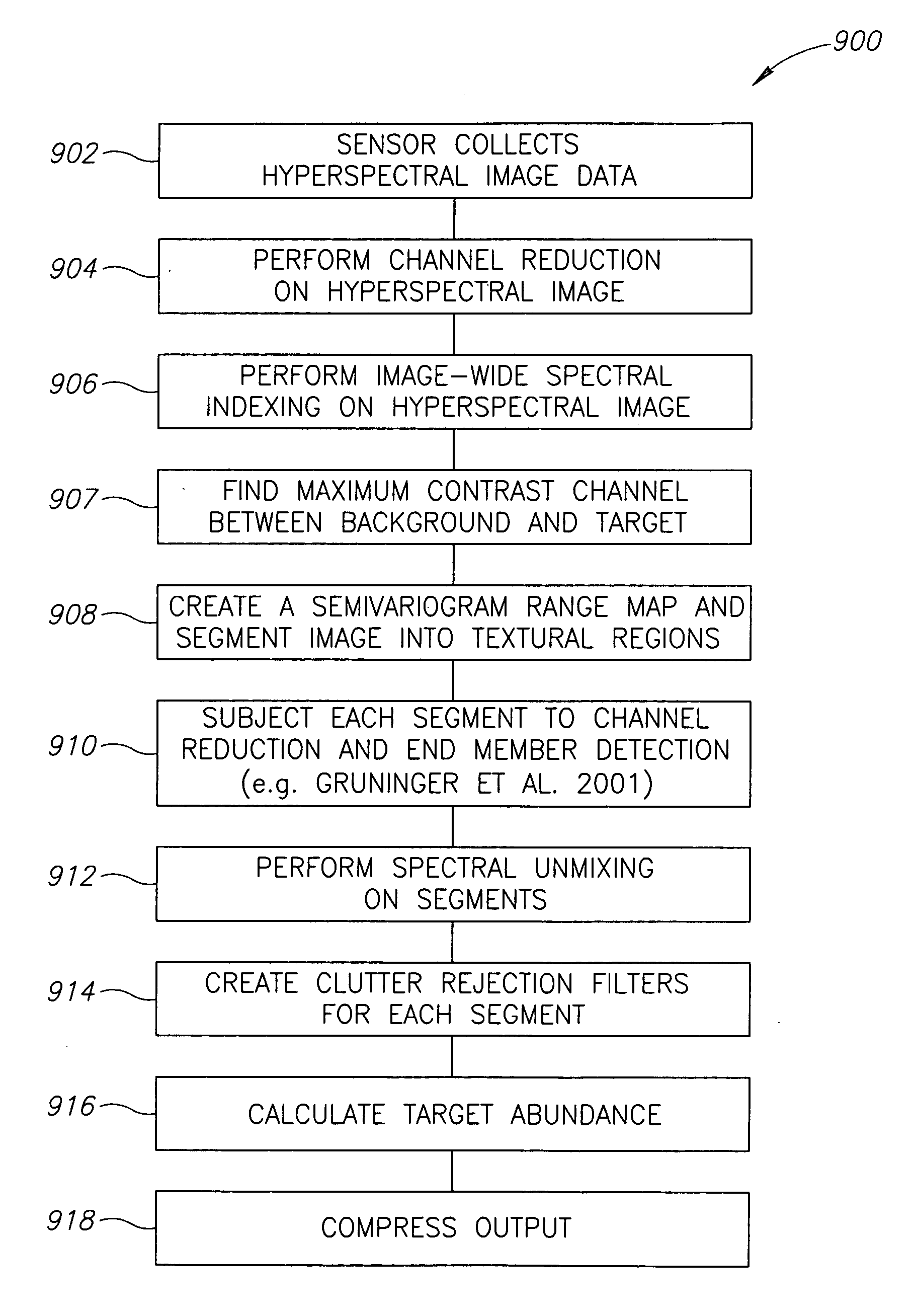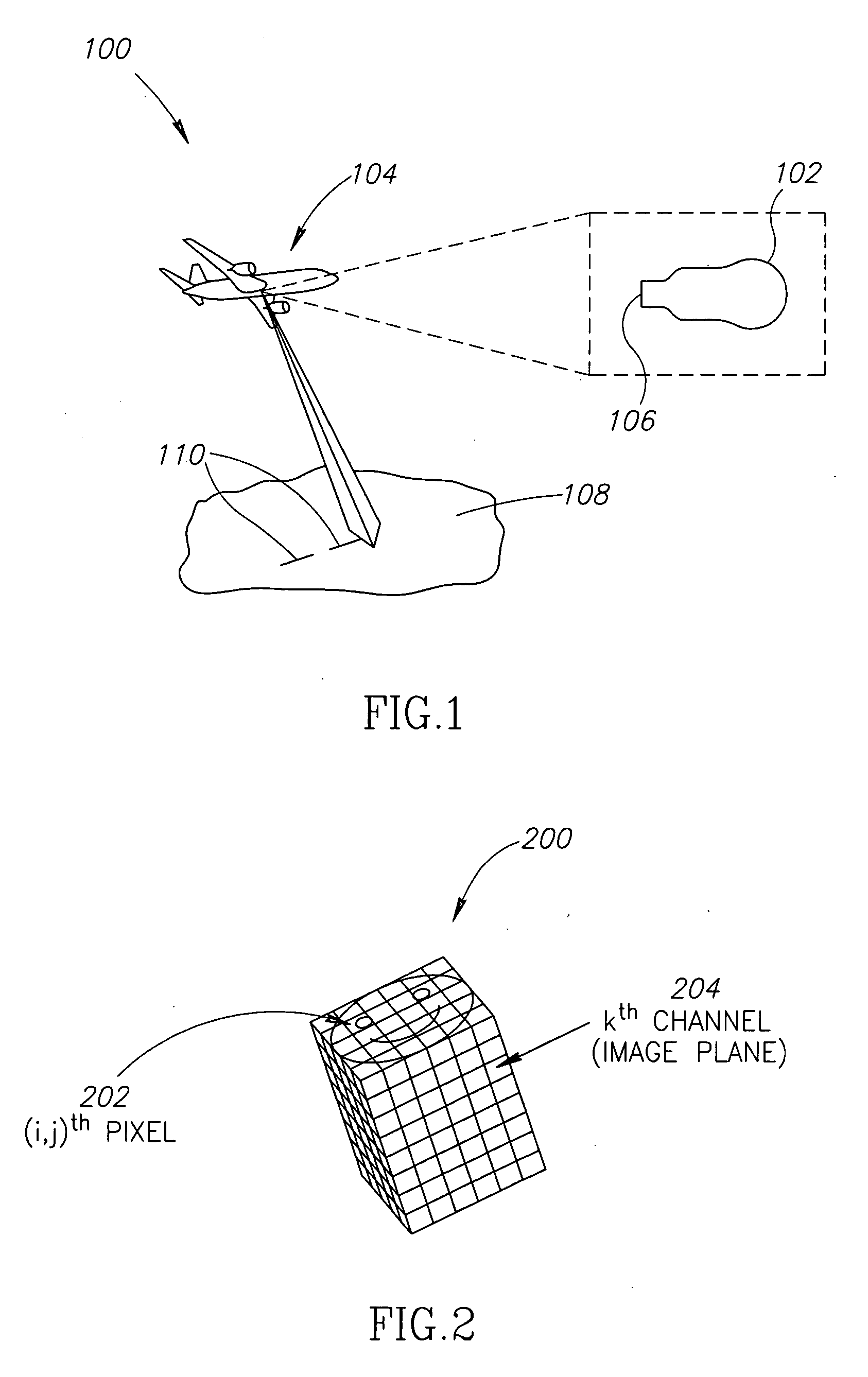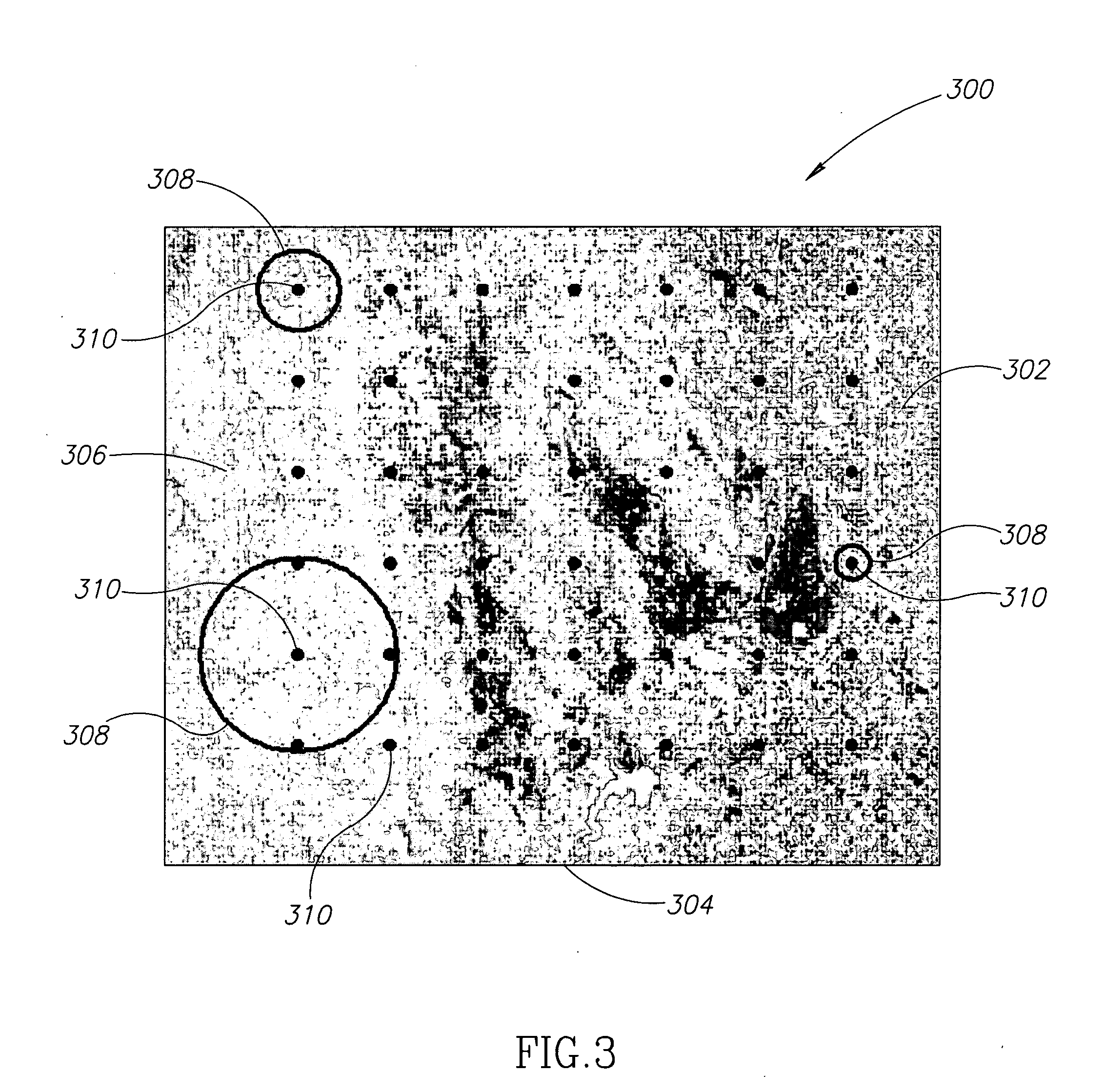Methods and apparatus for adaptive foreground background analysis
a background analysis and background technology, applied in image analysis, image enhancement, instruments, etc., can solve the problems of inability to detect partially concealed targets in hs scenes with uniform backgrounds, inability to detect moving targets optimally, and inability to achieve uniform backgrounds in hs scenes, etc., to achieve the reduction of computational workload for its unmixing, the effect of reducing the computational workload of the segment and reducing the data volume associated with the location of possible targets in the segmen
- Summary
- Abstract
- Description
- Claims
- Application Information
AI Technical Summary
Benefits of technology
Problems solved by technology
Method used
Image
Examples
Embodiment Construction
[0018] The present disclosure relates to methods and apparatus for detecting targets and / or anomalies within images having nonuniform backgrounds, and more specifically, to analytical models for improving target detection through local background and clutter rejection. Many specific details of certain embodiments of the invention are set forth in the following description and in FIGS. 1-9 to provide a thorough understanding of such embodiments. One skilled in the art, however, will understand that the present invention may have additional embodiments, or that the present invention may be practiced without several of the details described in the following description.
[0019] As described more fully below, embodiments of methods and apparatus in accordance with the present invention may permit better target detection, even when the targets are partially concealed, via automatic background scene segmentation. Embodiments of the present invention may select only those channels from a hy...
PUM
 Login to View More
Login to View More Abstract
Description
Claims
Application Information
 Login to View More
Login to View More - R&D
- Intellectual Property
- Life Sciences
- Materials
- Tech Scout
- Unparalleled Data Quality
- Higher Quality Content
- 60% Fewer Hallucinations
Browse by: Latest US Patents, China's latest patents, Technical Efficacy Thesaurus, Application Domain, Technology Topic, Popular Technical Reports.
© 2025 PatSnap. All rights reserved.Legal|Privacy policy|Modern Slavery Act Transparency Statement|Sitemap|About US| Contact US: help@patsnap.com



